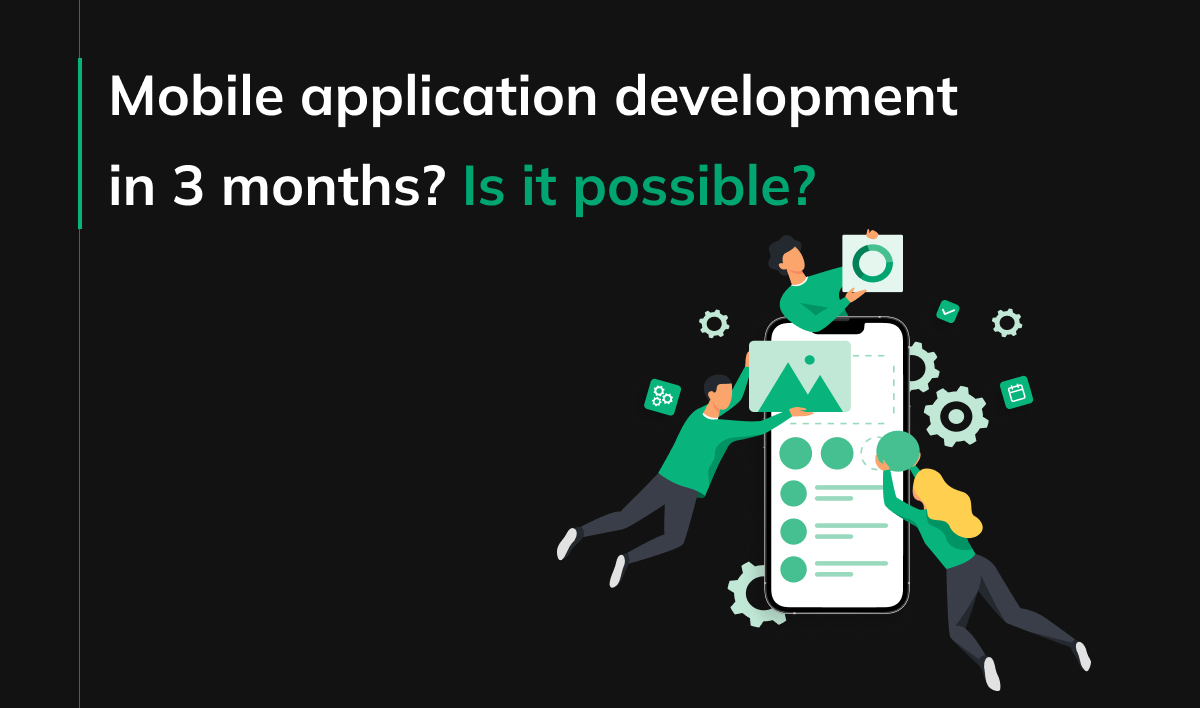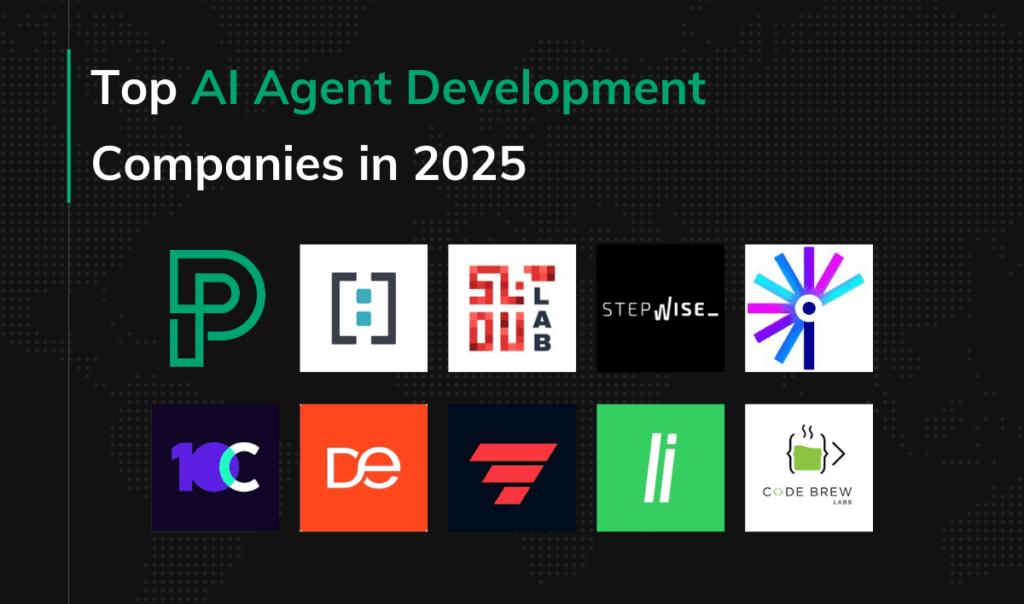Mobile application development in 3 months? Is it possible?

We live in an era when most of us, especially young people, cannot imagine life without smartphones. So it’s no surprise that more and more businesses look for mobile application development services to create their own mobile app. If you are one of them this article is for you. You will get to know why your product should be created in no more than 3 months and how to achieve it.
Why mobile application development is for you
Let’s start with a handful of statistics. According to Bankmycell.com 5,28 billion people own a mobile device. That huge number represents as much as 67% of all people living on the globe! Today, the majority of web traffic is already coming from mobile devices. People want to easily access their finances, shop online, make appointments, communicate with friends, read the news, and so on using a smartphone. These trends are clear and likely irreversible. It’s also expected that the mobile application development industry will reach global revenues of $935.2 billion by 2023.
New applications are created by both innovative startups and well-known brands, e.g. from gastronomy, trade, or tourism. Enough to say that it’s almost impossible to do shopping in any of the supermarket chains or clothing stores without being asked about having their app. An application provides brands with the tremendous opportunity to offer a highly personalized user experience and develop deeper relationships with customers. This is a great way to get regular customers. So if you’re wondering if it’s time to build your own application, we’ll answer: yes, it’s high time!
Is it possible to develop a mobile application in 3 months?
Now that you know why you should build your own mobile app, let’s focus on how to do it smartly, which means saving time and money. We usually advise our clients to create and release the first version of the product as soon as possible. It’s no different in the case of mobile applications. Why? Because this approach allows you to discover if your application is needed at all and if there are people interested in using it. By building an MVP version in 3 months, you have a working product with a nice design and can quickly test it among the first adopters. Only then can you decide if the app is worth further investment. In this case, you make this decision at a time when you haven’t spent that much money or a lot of time on it yet. So it’s easier to make a pivot or abandon the idea if you find that there is no demand for it (it happens).
So, building a mobile app in less than three months is perfectly possible. In fact, we’ve proved that it can be done even in 4 weeks! All you need is to identify your main goals and limit the scope of the project.
What devices do your audience use?
There are two main operating systems used in smartphones: iOS, which is available on Apple devices, and Android, on the others. Developers can build apps for hundreds of millions of devices by targeting both of these systems. Before that happens, you need to decide whether you want a native or hybrid app.
Native or hybrid application? Android or/and iOS?
When creating an app, you need to know that Android and iOS are different. If you want your product to work on both systems, this often requires the preparation of actually two separate and native versions of the application.
A native application is developed specifically for a mobile operating system. This means that it’s better suited to the device, providing quality and uniqueness. Let’s not kid ourselves, native apps provide a better user experience and greater security, but they are more expensive and time-consuming solutions. This is why some companies decide to prepare only the Android one in the first place since as many as 70% of all mobile devices use it. Our advice is to approach this in a pragmatic way – conduct research on the target group. That’s what we recently did for a new banking app that is going to target the English market. It came out that the number of Android and iOS users is similar in that group. Finally, the client decided to develop two native versions of the app simultaneously. However, if you find that one system prevails among your audience, consider preparing only one version first. Once it’s ready, creating the second version will be easier.
It’s different with hybrid applications. They are built using Flutter and React Native technology – software development kits for developing cross-platform applications for both Android and iOS. The benefit is that you create one version instead of two. However, it’s severely limited and not adapted to all the features that your chosen iPhone or Samsung model offers, for example. Apps developed with these technologies also cannot take advantage of certain device features.For example, in order for an app to access camera or camcorder functions, native code must be written anyway. We encourage you to choose the hybrid version in very few cases where all the following conditions are met:
- You have a very low budget.
- The application is supposed to be very simple.
- You don’t expect it in the future to grow.
- You don’t plan to process sensitive data in the application.
Choose the right mobile application development company
When looking for a company to develop a mobile app, see if they offer a multidisciplinary product development team, consisting of Product Owner, developers (both Android and iOS), testers and designers. It should include at least two Android and two iOS specialists, but in practice the team is often smaller due to cost savings. Such a team should be able to work well together from start to finish and use Scrum, making it possible to create an MVP in 3 months. The Product Owner will help you define the scope of the product, and the other team members will work together through each stage of the development process.
Also, look for a company that doesn’t encourage you to do hundreds of features before going to market. Such software houses want to squeeze money out of you, and they aren’t interested in the success of your app. Instead, choose a partner that is focused on your business and advise you on how to approach development wisely. In addition, check if the company specializes in building native apps.
The most common mistakes in mobile application development
As a conclusion to this article, we offer you this list of 5 common mistakes to avoid.

Building app when it’s unnecessary
It happens all the time that companies build apps just to simply be able to display various data on the screen to their customers. Remember, if you don’t need features that work offline or features that use smartphone’s components, you should look for responsive web design (RWD) rather than a mobile application.
Choosing hybrid model
In most cases, this is a big mistake that results in a worse user experience, less secure data, and future problems with application evolution.
No prototyping phase
When creating an app, think about its users first and foremost. Prototyping allows you to design the right user experience, highlights the problems and challenges faced by future users and allows you to find the most effective ways to deal with them.
Lack of expertise
Many companies are trying to develop apps with their own in-house resources without having people on board who specialize in Android and iOS mobile app development. If you want a working app in 3 months, choose a proven vendor!
A project scope that is too large
Many of our clients seem to understand the approach we suggest to create an MVP version of a product in 3 months and release it. Even so, when determining the scope of the project, they often find themselves unwilling to keep it to the minimum necessary. Fortunately, here our Product Owners are available to help define what an MVP is.




